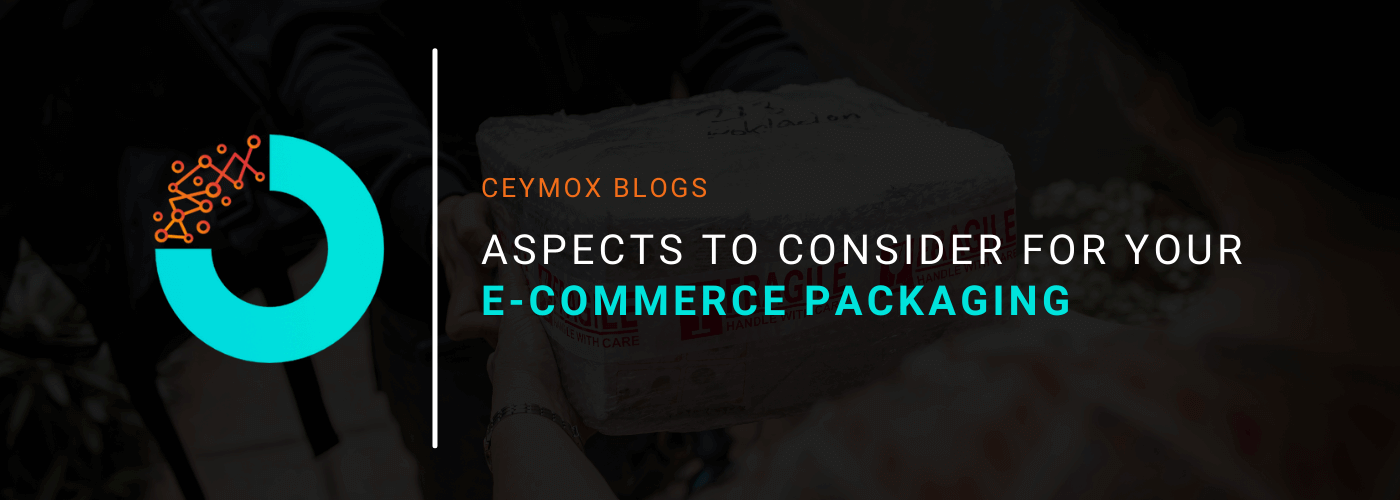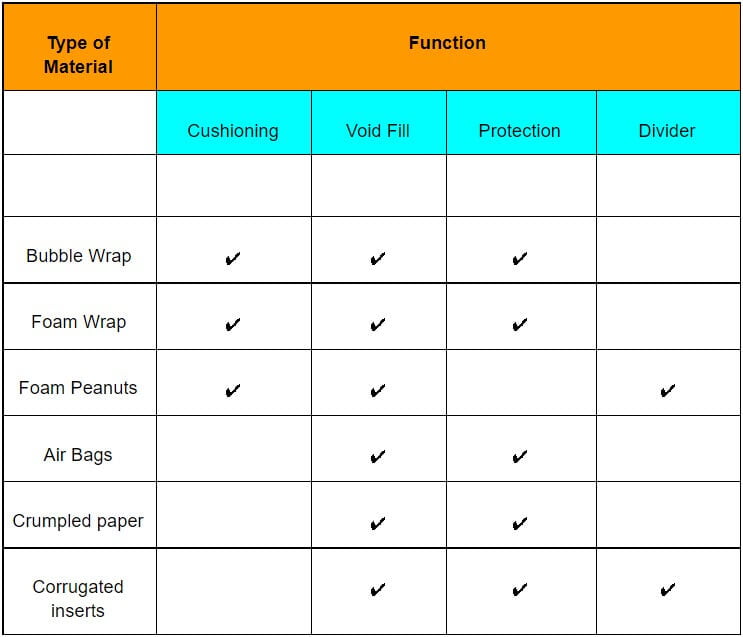
Since the birth of the e-commerce industry in the 90s, not just the e-commerce technology, practices, and customer experience has evolved, but we have also observed drastic changes in e-commerce packaging as well. It has evolved to accommodate the new way people shop. In this regard too, the customer experience is different from a traditional retail experience. When a customer makes a purchase from a store with a positive feel, he/she expects the same at the time of delivery as well. The delivery doesn’t on consists of timely updates, and fast dispatch but also on the packaging as well. The packaging reflects how you are treating your customers when they have completed the purchase. If you are sending the products in loose, unfit, or damaged boxes the customer will not be satiate to 100% and probably may not make the purchase again. Thus, packaging plays a very important role in your e-commerce store. In this article, we will go through certain aspects that you can consider for your e-commerce store packaging.
Direct Product Packaging:
It refers to the general package in which you will find the product and not using any external packaging or boxes to ship the product. The design, product information, SKU, product description, and branding are found on the direct packaging.
In traditional physical store shopping, it is often enhanced and made to show off the product to attract the customers but in the e-commerce industry, the packaging is most not shown to the customers and only products are shown. If the package had to be designed differently for shipping purposes, it would be essential to have the look and feel of the design (no matter its shape) match up as closely to in-store packaging as possible.
Direct product packaging can increase your store sales. When a customer searches for a product, reviews also matters, as well as a design that stands out. It is critical for companies to get attention. As the viewers are going through the product images, they are looking for something extraordinary. Good packaging can glue the eyes of the customer by accurately explaining and supporting the product.
Brand Consistency:
If you want to build the brand reputation and increase its popularity then packaging gives you an ultimate chance. You can extend the brand consistency through the next shell of the packaging and you don’t have to rely on most interior packaging elements. If you are a brand looking for that extra oomph you must include other materials or brand elements in their shipping packages. It can be a coupon, flier, small freebie, or logos on boxes. The more the consumer gets to know your brand and connects it to your products, the better.
Product Protection:
You can attract customers through the visual focus of your products and entice them to order them, but what is more important is to make sure that packaging is functional and can withstand the delivery mechanism. Product protection is a key and should be the utmost priority in your e-commerce practices. It is essential to research whether your product packaging can withstand the delivery process and shipping conditions. Typically, an online ordered package is handled 20 or more times before the final destination. It raises concerns about its damage and making packaging that can withstand all the intermediate movements and bumping around is needed. Is the product fragile or does it require any special attention in the journey? All such questions must be asked before the packaging.
Packaging Material:
The packaging material role is not just limited to the protect the product from outside factors but in the shipping process and waste management as well. The aim of packaging for shipping is to get the product to the consumer safely. For this, you have to use some materials which are typically never be used on shelves. Many things like packing peanuts, bubble wrap, plastic air pockets, and structural support are used. It is tough for businesses as they prefer the least amount of waste and the least amount of packaging volume. Also, since the consumers are also environmentally friendly they don’t like clunky packages which neither break down easily nor are environment friendly. Many times, companies that successfully adhere to recycling preferences and ease of breakdown get some sort of praise or good ratings from their customers in that respect.
Volumetric Considerations:
· Weight:
The weight of the package must be kept in check as the weight of the product will define the kind of packaging material needed to use. Also, the weight of the package plays an important role in the courier charges. Higher the weight more will be the charges.
· Shape and Size:
Before the packaging of the product, all the dimensions of the product i.e. length, breadth, and height should be measured properly. This will let you know the proper size of the packaging material. Just like the weight, the size of the parcel also decides the cost of sending it. You must use an optimum size box that can fit the product properly and leaving the minimum empty space for fillers.
· Type of Product:
The kind of product plays an important role in deciding the type of packaging technique that needs to be adapted. For e.g. a fragile product made of glass will require more cushioning material to prevent it from being broken or damage while a hardcore material will not require any such protection. Also, special requirements can be defined if any.
· Value of Shipment:
If the shipment is of high value then an added layer of protection can be done for the product to ensure complete safety.
· Types of Packaging Material:
Generally, there are two kinds of packaging material used in the delivery of our products – external packaging and internal packaging.
External Packaging:
It mostly involves parcels and flyer bags. The parcels are corrugated boxes, double or triple walled boxes. The external packaging is used for transporting heavy items such as electronic items, fruits, and also fragile items including glass bottles, cans, etc. A flyer bag can store small items like boxes, makeup products, etc and can accommodate items of up to 4kg in weight. For 0-5 kg Flyers are preferred, 5-10 kg single-walled parcels are preferred, and 10-30 kg, double-walled parcels are preferred.
Internal Packaging:
Internal packaging materials include bubble wrap, airbags, cardboard, and foam pellets. These items can perform many purposes such as cushioning, void filling, protection, dividers, and absorbing shocks. If you are delivering any fragile product it is a must that these products should be used in ample quantity so as to avoid any damage.

Packaging Methods:
There are two major types of packaging methods. These are:
· Basic - Single Box Method:
In the Basic – Single Box Method, a single double-walled box is used for packing the products along with the fillers inside. This method offers a good level of protection to the products but it is limited to small, non-fragile products which don’t need to deliver too far. In such scenarios, it is best to use a double-walled box with newspaper or loose filling inside for filling up empty spaces.
· Double box or Box-in-box method:
The double box method gives you a high level of protection in comparison to the above-mentioned method. It is highly suitable for fragile items like glass, cutleries, etc. which require extra protection from friction during the movements. It is recommended that the first box can be the manufacturer’s box and a bigger box be used for the secondary package. Use loose fillers such as loose-fill peanuts or other crushing material for filling the empty spaces.
Security of the package:
You can’t neglect or underestimate the security of your send package. As horrible as it seems, there are many examples of scenarios of package theft. Many people, don’t give any attention to the packages which are inconspicuous and just look like any typical brown box. But, if there are flashy colours shown on the exterior of the package, it can catch the wrong type of attention. This type of accent to packaging can always come in the interior layers. It is best to keep the outside as inconspicuous as possible and save the best to be desired on the inside.
The unboxing of products has become an experience for the customers. The customers get excited about what they have ordered and it gives companies opportunities to make their customers happy by improving this experience. Instead of sending the product in a plain brown box, they can adapt any other way then it will be easily noticeable by the customers. This has even become a new trend, with people filming ‘unboxing videos’ to post on Youtube or social media. In fact, many influencers who get millions of views for their videos on YouTube are a great opportunity for you to promote your product. Unboxing packages can be exciting, and if the company can play on this aspect by adding nice design on the interior or doing something to make the customer feel celebrated, they’re doing this right (and potentially getting free advertisement if the packages are shared online).
Always remembers first impression matters in business too. Branding across packaging materials involved in the shipping process is a good way to strengthen brand identity.
Final Words:
In comparison to traditional in-store packaging, e-commerce packaging differs in many ways. When all the discussed factors come into play, it needs the right strategy to get the desired item to the customer quickly, safely and consciously. The right combination of visual design and strategic e-commerce packaging can make for a great experience and can turn that one-time customer into a lifetime customer.
At Ceymox Technologies, the best e-commerce development company in India, we can help you in developing e-commerce stores from scratch with varied features and functionalities. Our expert developers can integrate plugins, develop new extensions, themes, and whatnot. Let us know your requirements.
 Hubspot SEO Certified |  Hubspot SEO II Certified |  Google Ads Search Certified |  Google Analytics Certified |
Sreehari N Kartha is a skilled Digital Marketing Analyst at Ceymox, certified in SEO. His expertise encompasses a wide range of digital marketing strategies, including managing advertising campaigns on platforms like Google Ads, Facebook Ads, Instagram Ads, WhatsApp Ads, and LinkedIn Ads. With a strong foundation in SEO and SMM, Sreehari is adept at optimizing online visibility, driving engagement, and generating qualified leads and conversions. His passion for emerging technologies, such as Crypto, NFTs, and Web3, further complements his skillset, enabling him to navigate the dynamic digital landscape.
View All Articles